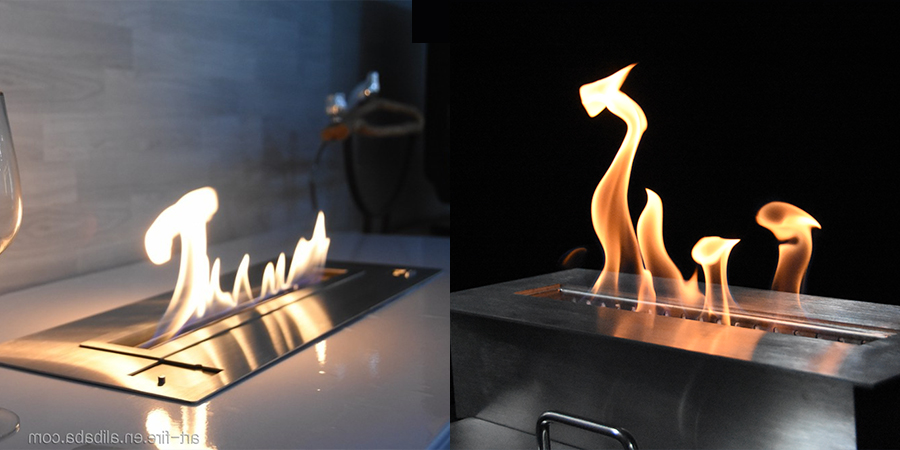This refers to the burner of the bio fireplace and how it works.
Bioethanol fireplaces first appeared in 2005. La introducción de los fuegos de bioetanol hizo posible colocar una chimenea en casi cualquier lugar y sin ventilación., tubo, humo, hollín o mantenimiento costoso. Desde entonces, la tecnología y la seguridad han evolucionado, y hoy tenemos dos tipos de incendios de bioetanol: Manual and Automatic bioethanol burners.
These two types each have their advantages and disadvantages. Hence, the type of burner you select, depends on what requirements you have for your fireplace, where it will be used, and what your budget is.
Although there are only two types of bioethanol burners, the products from different manufactures can vary and offer differences in the way their burners work.
Benefits of a Manual Bioethanol Burner
1. No se requieren energía ni cables y se puede montar en todas partes.
Los quemadores y chimeneas manuales de bioetanol se pueden instalar y colocar libremente, porque no requieren ninguna conexión de alimentación ni de otro cable, ni necesita chimenea, respiradero o chimenea. The only factor to consider is which size you want the burner to have.Sin embargo, tú, por supuesto, Todavía es necesario ser consciente de los riesgos generales de incendio y las distancias de seguridad.. Puedes leer sobre distancias de seguridad en nuestra guía sobre el tema..
2. Los quemadores de bioetanol manuales son incendios biotanol baratos que han existido durante algunos años, con los fabricantes optimizando continuamente los costes de producción. Además, Los quemadores manuales no requieren ninguna tecnología digital., y esto significa que los precios de las biochimeneas manuales son bastante bajos en este momento.
Benefits of an Automatic Burner
1. Easy to control the flame.
It is easier to extinguish and ignite an automatic burner. All you have to do, is click on the remote control, the control panel on the burner or via an app. Some automatic bio ethanol fires also allow adjustment of the flame size and control over the amount of radiated heat.
2. Safety sensors.
An extra bonus with an automatic burner, is the number of safety sensors, which are not possible to get in a manual burner. This may include sensors that monitor CO2 levels, shaking, overheating, etc. So the fireplace will be switched off automatically, in case the sensors picks up any dangers.
3. Fuel economy.
Automatic burners often have a better bioethanol fuel economy, since the fuel is only pumped into the burner, when it is needed. This means that no bio ethanol fuel will be wasted when the fireplace is being switched on and off. Además, it will also not evaporate by itself if unburnt bioethanol is left in the fireplace.
Disadvantages of an Automatic Burner.
1. Expensive.
One of the biggest disadvantages of an automatic bioethanol burner is the price. An automatic bioethanol burner costs a lot more than its manual counterpart. The reason for this is that the technology used in the automatic models is still relatively new and more advanced. This means, it requires more development and working hours to produce, and the materials needed for the manufacturing are more expensive.
2. Requires power
In order for all the electronic components in the burner to work, it is necessary to have a power connection close to the installation of the ethanol fireplace. This makes the installation less flexible.
Sin embargo, some automatic burners are equipped with a battery and therefore require recharging instead.

Manual Ethanol Fire Burner AFM150 Inserts For Indoor Decoration ; Design Bio Ethanol Fireplace AF66 With Remote Controller For Sale - Art Fire ;
Hora de publicación: 2021-11-22
